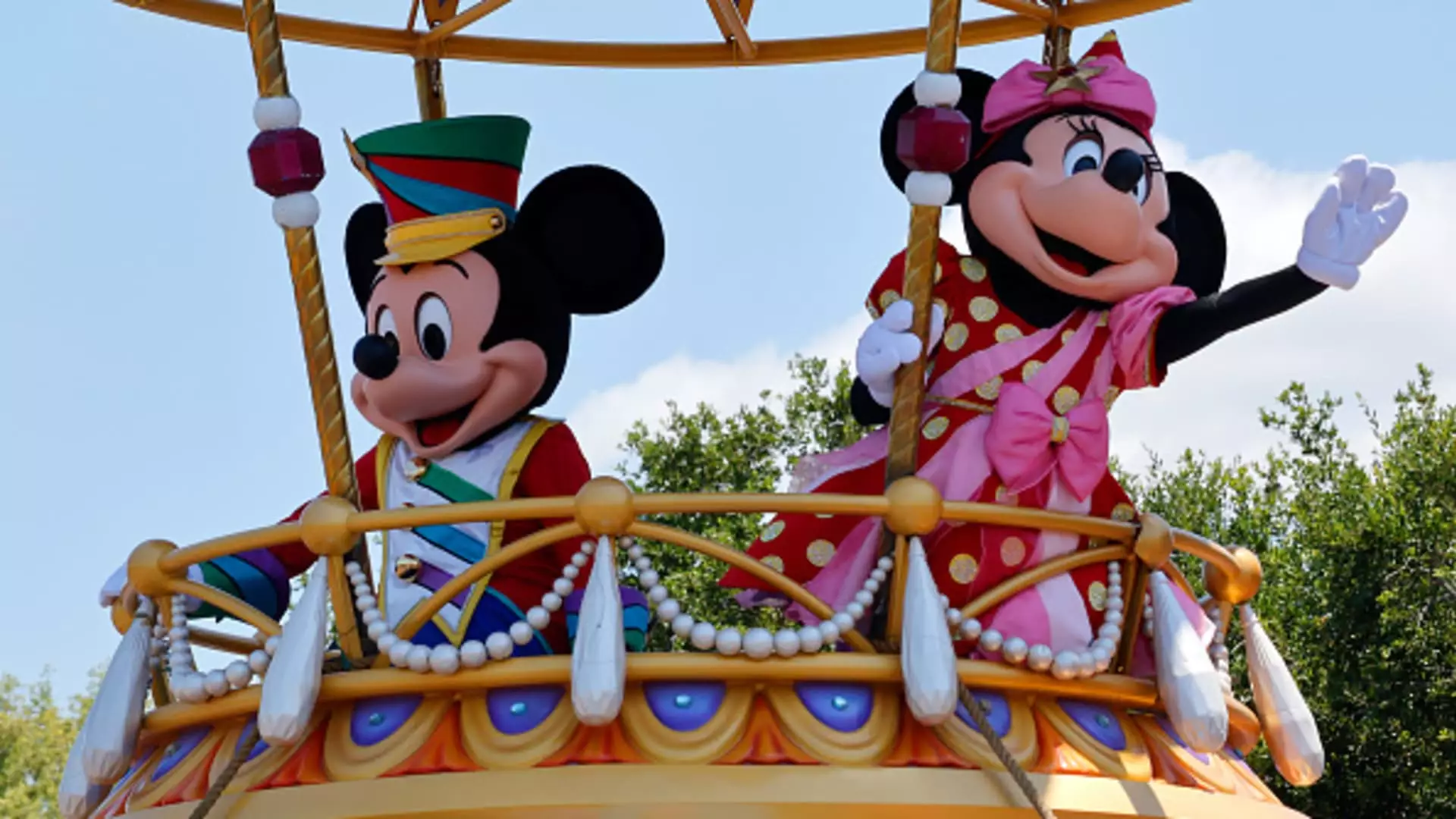Disney’s long-standing appeal as a global entertainment leader is undergoing a notable renaissance. Following a strategic overhaul spearheaded by CEO Robert Iger, the company has showcased impressive quarterly earnings, signaling a successful turnaround. In this article, we delve into the driving forces behind Disney’s revitalization, the implications for its investors, and what the future holds for this entertainment giant.
For the fiscal fourth quarter, Disney reported a staggering revenue of $22.57 billion, exceeding the Wall Street expectations of $22.45 billion. This impressive feat is not merely a numerical achievement; it demonstrates the effectiveness of Iger’s recent strategies aimed at revamping the company’s struggling streaming segment. A significant indicator of Disney’s recovery is the adjusted earnings per share (EPS), which surged 39% year-over-year to $1.14, outpacing analysts’ expectations of $1.10. Following the release of these results, Disney’s shares experienced a commendable 10% spike, reflecting investor confidence in the company’s trajectory.
This quarter has been particularly satisfying for Disney stakeholders. The company’s ability to surpass both sales and earnings expectations amid challenging economic conditions underscores its adaptive strategies. The strong cash flow generated not only cements Disney’s financial standing but also affirms its operational reforms, particularly in its direct-to-consumer streaming unit. The profitability of this segment exceeded consensus predictions, highlighting a successful execution of strategies that have revitalized this crucial aspect of the business.
One of the keys to Disney’s renewed vigor lies in its diversified approach to content monetization. Iger emphasized the concept of a “multiplier effect,” wherein successful movie releases generate a ripple of financial benefits across various revenue streams—an ecosystem that includes streaming platforms, theme parks, cruises, consumer merchandise, and gaming. This intricate weave of interdependence ensures that a hit movie today brings far more value than it ever has before. Iger’s acknowledgment of this paradigm shift is significant as it indicates a transformation in how content is valued and monetized, suggesting that the entertainment landscape is evolving toward more cohesive and integrated experiences.
Moreover, Disney has lined up an exciting slate of releases for 2025, featuring anticipated titles such as “Captain America: Brave New World” and “Lilo and Stitch.” This proactive content strategy is designed to attract audiences across demographics, ensuring that Disney remains a formidable competitor in the saturated media landscape.
Anticipation is building for the debut of Disney’s Direct-to-Consumer (DTC) ESPN streaming service, expected to launch in the fall of 2024. This venture marks a critical addition to Disney’s portfolio, integrating live sports, studio shows, and even managed betting services. Iger hinted at the potential for further innovation, suggesting possibilities such as AI-driven personalized sports programming. This forward-thinking approach not only enhances user experience but also reflects a broader industry trend towards technology integration.
Given these developments, the future appears bright for Disney, with management projecting substantial growth across various segments. The company’s initial outlook for 2025 indicates a high single-digit growth rate in earnings, surpassing Wall Street’s more conservative projections. Additionally, the expectation of substantial cash flow from operations, alongside strategic capital expenditures, reflects a bullish outlook.
Disney’s revitalization comes at a time when competition in the entertainment sector is intensifying. Rivals such as Comcast, Netflix, and Warner Bros Discovery are continuously innovating and vying for consumer attention. However, Disney’s unique positioning—rooted in its unbeatable theme park clout, robust content library, and diverse revenue streams—provides it with a distinct competitive edge.
Management’s commitment to reducing costs and improving the profitability of its DTC products stands as a testament to its operational agility. The identified potential for monetizing ESPN and other franchises not only enhances Disney’s profitability but also opens doors for future growth.
As Disney navigates the complexities of the entertainment industry, its recent quarterly results and strategic initiatives suggest that this entertainment powerhouse is on the right path. With expansive plans for content, innovative services on the horizon, and a clear vision for sustainable growth, investors have multiple reasons for optimism. The concerted focus on enhancing profitability while embracing technological advancements indicates that Disney is not just back but potentially repositioning to become an even stronger player in the industry. In this optimistic climate, investors should keep a close watch as the company unfolds its next chapter amidst a revitalized entertainment landscape.

